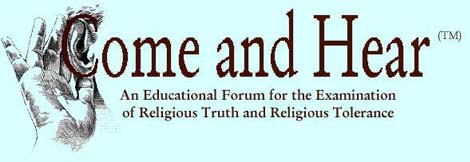Censoring the Talmud
1. Do Not Censor the Talmud, Please
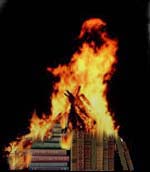
Censorship damages inter-religious and inter-cultural understanding — no matter who does it.
| Navigate This Site | |
 | |
| Home | |
| Valentine | |
| Dilling | |
| Talmud | |
| The Rabbis | |
| Supplement | |
| Glossary | |
| Download | |
| Admin | |
| | |

Censorship takes many forms.
Many political forces — from Roman emperors to Catholic popes to European kings — have tried to eradicate the Talmud. But Talmudists themselves have also been guilty of suppressing this treasured work of Judaism. Even though local public libraries throughout the US have copies of the Bible and Bible concordances on their shelves, they characteristically do not have the unabridged Talmud. The Talmud is the Unknown Book.
Given the high praises heaped on the Talmud by Jewish leadership, the Talmud — with a comprehensive subject index — should be on the shelves of every local public library throughout America.
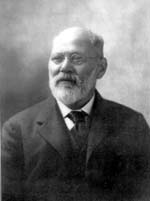
Rabbi Michael L. Rodkinson, author of The History of the Talmud and New Edition of the Babylonian Talmud
"… we would invite the reader to take only a glance over the past of the Talmud, in which he will see that in almost every century and place of the different countries in Europe, the Talmud was condemned to the stake. By a glance over the present time, however, he will see that not only was the Talmud not destroyed, but was so saved that not even a single letter of it is missing; …" — Rabbi Rodkinson (14)
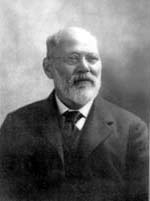
Rabbi Michael L. Rodkinson, on the other hand …
"We are convinced that many, yes, very many, offensive passages in the Talmud are traceable to the Jews-Christians among the Rabbis … it is to these Jews-Christians that we attribute the authorship of some of the above-cited sentences that sound in a measure defamatory to the Rabbis … We, in our new edition of the Talmud have omitted both legends concerning David, as we are certain they are not to be ascribed to the Rabbis of the Talmud …" — Rabbi Rodkinson, (7)
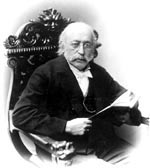
Rabbi Dr. Isaac Mayer Wise founded the Union of American Hebrew Congregations in 1873, the Hebrew Union College (in Cincinnati, Ohio) in 1875, and the Central Conference of American Rabbis in 1889. He is a pioneer of Reform Judaism in America. Hence, among religious Jews, Rabbi Dr. Wise is a giant. (18) Rabbi Michael L. Rodkinson's New Edition of the Babylonian Talmud was published under Rabbi Dr. Wise's editorship. (15)
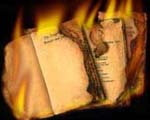
A Book Condemned
Some people mistakenly believe ideas can be opposed by force and censorship.
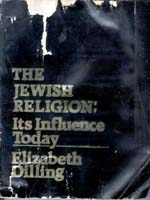 Damaged but not lost
Damaged but not lost
This copy of Elizabeth Dilling's book was damaged when political vandals fire-bombed Ernst Zundel's Toronto house in May 1995. Many other books and documents were lost through fire and water damage. As Johannes Reuchlin remarked in the 16th Century, "Burning is but a ruffianly argument." (17)
Elizabeth Dilling's book survived, and is now available for millions of Internet readers at Come and Hear™. (43)
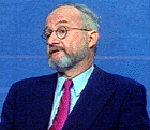
Rabbi A. James Rudin, National Interreligious Affairs Director of The American Jewish Committee:
"Partial, incomplete or pre-selected archival records will not be enough in a world where transparency and full disclosure is now the norm if an institution … is to maintain its integrity." (9)
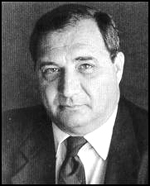
Abraham H. Foxman, National Director of the Anti-Defamation League of B'nai B'rith (ADL):
"Censorship is not the answer to hate on the Internet. ADL supports the free speech guarantees embodied in the First Amendment of the United States Constitution, believing that the best way to combat hateful speech is with more speech.
"ADL continuously monitors and documents Internet hate. By communicating its findings, ADL promotes public awareness of the plans and history of online bigots, in line with the League's view that exposure will lead to rejection of haters and their propaganda. ADL has made available an increasing amount of information to Internet users by significantly expanding its Web site.
"Additionally, in cooperation with The Learning Company (TLC) of Massachusetts, ADL plans to release filtering software using the technology of TLC's CyberPatrol software. This software, titled ADL HateFilter, will provide parents and others with the ability to block access to Internet sites that ADL believes promote hate directed at groups or individuals that are singled out because of their religion, race, ethnicity, gender or sexual orientation." (20)
What is "free speech" without the freedom to hear? What is freedom of the press without the freedom to read? Rabbi Rudin's goal of "transparency and full disclosure" is further away than Mr. Foxman's politically correct speech. Censorship must be unlearned as a habit of mind.

Constantin Brunner was a German Jewish philosopher born in 1862. He is praised as "one of the greatest thinkers of that age" and his books are still in print. Brunner wrote:
"We must fear calumnies and insults; hence we must make ourselves feared, so that people will be slow to trouble us. We must make people afraid of our anger, or — if this is powerless — of our hatred and revenge. We must defend ourselves against insults and slanders with all available means, by our own efforts and, if it comes to it, by claiming the public protection of the law." — Constantin Brunner (30)
Brunner's solution for anti-Semitism is not unlike that of Abraham Foxman. May we respectfully suggest that the solution lies elsewhere? Lies should be combated with truth. A complete, uncensored, unabridged English edition of the Talmud with a workable subject index should be put on the shelves of every community public library throughout the United States. (19) The Soncino Talmud includes erudite and readable rabbinical running commentary on the text, ideal for students, new and old.
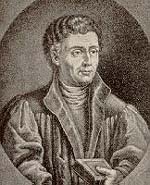
Johannes (Johann) Reuchlin (1455-1522)
"John Reuchlin, the great Humanist, was the first to maintain that, even if the Talmud contained attacks on Christianity, it would be best to answer them. 'Burning,' he said, 'is but a ruffianly argument.'" — Johannes Reuchlin (17)
So, too, we should echo Johann Reuchlin: censorship and denial is but a ruffianly response to the critics of one's sacred scriptures. It is ironic that the Talmud, which has so long been the subject of censorship by its critics, is now censored, hidden, and disguised by the Jewish leadership.

"The Talmud is undoubtedly one of the most remarkable literary productions of all times. It is an encyclopedia covering the whole scene of human life. It is almost impossible to convey to one who has not spent years in the study of this complex work an idea of its true nature, as even the most exact translations cannot catch the inner spirit of the Talmud …" — The Universal Jewish Encyclopedia (28)


"'Talmud'? Who's the author?" — Librarian, Fairfax County Public Library, prosperous suburb of Washington, DC.


You can help in the battle for Truth, Justice, and the American Way! Fight the forces of censorship and suppression of the Talmud, and bring about understanding between peoples of different faiths.
Download this site to your desktop computer.
Make CDs and distribute them to friends, neighbors, ministers, and community leaders.
Email your favorite essay to your email list.
Post your favorite essay to discussion forums.
Print your favorite essays and give them to those not on the Internet.
Flyers advertising Come-and-Hear.com can be distributed throughout your community.
 Genuine Come and Hear™ CDs do not contain executable programs. When making CDs, do not include any files that end in .exe, .com, .bat, .vbs, .doc, .pif, .sit, or .scr. The person receiving the CD should use his own browser to view the files. This helps to protect him from harmful programs and viruses.
Genuine Come and Hear™ CDs do not contain executable programs. When making CDs, do not include any files that end in .exe, .com, .bat, .vbs, .doc, .pif, .sit, or .scr. The person receiving the CD should use his own browser to view the files. This helps to protect him from harmful programs and viruses.
In What We're About, we heard from a number of authoritative voices about the over-arching importance of the Talmud in Judaism.
If the Bible is the cornerstone of Judaism, then the Talmud is the central pillar, soaring up from the foundations and supporting the entire spiritual and intellectual edifice.
— Rabbi Adin Steinsaltz (1)
The Talmud is one of the wonders of the world. It still dominates the minds of a whole people, who venerate its contents as divine truth.
— Rabbi Michael L. Rodkinson (2)
Remarkable. Here is a book that should be in the "Great Books" series, offered in leather bound edition by the Franklin Mint. It should be in every public library, along with the Bible and sets of encyclopedias. But have you ever opened and read even one tractate of the Talmud? Do you know anyone who has? Have you ever seen the Talmud in a bookstore or public library?
"Talmud? Who's the Author?"
Try this: Call your local public library and ask if they have a copy of the Bible on their shelves. Then, ask her if the library has a copy of the Talmud.
This writer lives in the wealthy and populous Fairfax County, Virginia, just outside Washington, DC. We have a visible and influential Jewish community — the outreach arm of Judaism, Chabad Lubavitch, has three centers in the Northern Virginia area. When we called our local public library and asked about the Bible, the librarian laughed and said: "We've got a zillion copies. We have more translations than you can shake a stick at. We have reference copies and copies you can check out. We've got lots."
Then we asked about the Talmud. "Who's the author?" the librarian asked. We explained the significance of the Talmud to her. She sounded puzzled, and told us she had never heard of it. She asked us to repeat and spell the name, and give her the name of the publisher. So we spelled "Talmud" and "Soncino."
The Talmud is undoubtedly one of the most remarkable literary productions of all times. It is an encyclopedia covering the whole scene of human life. It is almost impossible to convey to one who has not spent years in the study of this complex work an idea of its true nature, as even the most exact translations cannot catch the inner spirit of the Talmud.
— Herschel Revel, for The Universal Jewish Encyclopedia (3)
We are also glad to notice that among Gentiles the study of the Talmud is more or less spreading, as we have the experience that a great number of Gentiles and almost all the theological seminaries and public libraries subscribed to the Talmud, and also many queries concerning it frequently came to us from Gentiles. This all shows that the study of the Talmud among Gentiles is not very rare.
— Rabbi Rodkinson, writing in 1903 (4)
The librarian checked her computer system. No, the Fairfax County Library system did not own a copy of the Talmud, she said. She checked the Inter-Library Loan system. She could find no public library that owned a copy of the Soncino Talmud. The only copies she could find in the state were owned by universities.
… the Talmud … is one of the great classical writings of human civilization — enduring, influential, nourishing. The Talmud claims its place among the most successful pieces of writing in the history of humanity, along with the Bible, Plato's Republic, Aristotle's Politics, the Koran, and a very few other writings.
— Rabbi Dr. Jacob Neusner (5)
What's Wrong with This Picture?
In 1991, the American Jewish community was sufficiently influential to have the US Congress declare the Noahide Laws of the Talmud to be the basis "upon which our great Nation was founded." (6)
In 1999, the American Jewish community was sufficiently influential to have an amicus brief accepted by the US Supreme Court. The brief was based wholly on Talmudic law. (See Sentence and Execution, URL in footnote (22))
In 2002, the American Jewish community was sufficiently influential to arrange to use the US Supreme Court building as a banquet hall to serve a kosher dinner. The occasion marked the founding of the National Institute for Judaic Law. (16) The Institute has the stated purpose of injecting Talmudic law into American law and society. Two hundred people, including three Supreme Court Justices, attended. There is no doubt that those who arranged the dinner have great influence.
And yet these same influential Americans have overlooked a simple, fundamental step in their campaign to bring the Talmud to America. The Jewish leadership has not arranged for copies of the famous rabbi-approved, uncensored, Soncino Talmud to be placed on the shelves in public libraries throughout the US. (See Kudos for Soncino.)
The Soncino Talmud has received wonderful accolades; it is surely the greatest single public relations vehicle the Jewish religion possesses.
Rabbi Shmuley Boteach is a disciple of the Chabad Lubavitch Rebbe Rabbi Schneerson, and author of more than a dozen books popularizing Judaism in America. In his book, Judaism for Everyone, Rabbi Boteach puts it this way:
Why did Judaism, with its strong mystical tradition and celebration of everyday life, never become the Buddhism of the Western world, its spirituality embraced by millions of people the world over without becoming Jewish? Given the phenomenal influence that Jews exercise in so many fields, why have they done so poor a job at promoting Jewish values and teachings?
— Rabbi Boteach (21)
How ironic it is that with three Chabad outreach centers in Northern Virginia, neither those centers nor Rabbi Boteach have placed the Talmud on the shelves of local public libraries in Northern Virginia.
The Anti-Defamation League of B'nai B'rith (ADL) hosts a page on their website with the following official statement:
Censorship is not the answer to hate on the Internet. ADL supports the free speech guarantees embodied in the First Amendment of the United States Constitution, believing that the best way to combat hateful speech is with more speech.
— Ant-Defamation League of B'nai B'rith (20)
Surely the ADL intended to write "true speech" rather than "more speech." Given the fragmentary quotes from the Talmud found on the Internet, some of which are excerpted from unauthorized translations, wouldn't the ADL's best course be to distribute the Soncino Talmud widely? It is fully authorized, widely acclaimed, accurate, scholarly, and rabbi-approved. The entire set should be in every public library in the US, right next to all those copies of the Bible.
The commercial viability for marketing and distributing large reference works has been proven by the Encyclopedia Britannica and many other encyclopedias.
Many Forms of Censorship
Censorship and suppression can take many forms, from the most obvious to the most subtle. With religious works, censorship can be imposed from inside the circle of believers, or from outside. Authors or readers of a work may be threatened with death or imprisonment, or the entire work may be destroyed through book burning. When a work is expurgated, parts may be suppressed but preserved, or destroyed altogether. More subtle forms of censorship include the use of euphemisms and code words to hide or disguise the meaning of the text.
Perhaps the most subtle form of censorship is substituting a Reader's Digest-type abridgement for the original work. Those abridgements typically avoid the essential — and sometimes controversial — elements of the original work. (12)
It is not our purpose to point fingers, but to turn a page. No more censorship or suppression of any kind, from any source! We urge the non-Jews to open their minds to the Talmud, and urge Jews to stand on the courage of their convictions.
We do not need dishonest representations of Talmudic law, as described in Sentence and Execution, Accusation and Trial, Abuse of Context, and US v. Talmud Law. Americans would be interested to learn about the Talmudic laws that prescribe beheading Christians for practicing their religion (see America's New Government Church). Americans should be exposed to Talmud laws on child-adult sex and homosexuality, marriage, divorce, and menstruation (for URLs, see footnote (22)). In these days of Israeli-Palestinian unrest, Americans need to know about the Talmud laws permitting mass extermination of tribes, towns, and cities, and they need to know about traditional Jewish laws and attitudes concerning Gentiles (see What About Gentiles).
Rabbi Dr. Joseph Hertz, Rabbi Michael Rodkinson, Elizabeth Dilling, and others have written extensively showing how the Talmud has been suppressed by forces outside Judaism. (13) Suffice it to say we are unalterably opposed to censorship and suppression of the Talmud.
Why Not Share?
There is no danger that the US government will order the Talmud burned. In the 21st century, censorship and suppression of the Talmud will not come from outside the circle of believers. But the Talmud itself gives ample evidence that censorship and suppression can come from inside the circle of believers. In the following passage, we learn that the Sages specifically forbid non-Jews to read the Talmud, on pain of death.
GEMARA. … R. Johanan said: A heathen who studies the Torah deserves death, for it is written, Moses commanded us a law for an inheritance; it is our inheritance, not theirs. )
— Babylonian Talmud, Sanhedrin 59a
Soncino 1961 Edition, page 400
That passage goes on to describe R. Johanan's legal logic behind decreeing a death sentence for non-Jews who read the Talmud, and the translator amplifies the text with footnotes. Those interested should follow the Sanhedrin 59a hot link.
That passage has been criticized by the controversial Louisiana political figure, David Duke. The ADL charges that Mr. Duke took Sanhedrin 59a out of context, and defends the passage in an amusing way: the ADL takes Sanhedrin 59a out of context. See Appendix A: ADL Takes Talmud Quotes Out of Context.
… Returning to Ezra the Scribe
Hundreds of years earlier, before R. Johanan ("A heathen who studies the Torah deserves death") was born, Ezra the Scribe rewrote the Old Testament in the Assyrian script, though still in the Hebrew language. That constituted a crude form of encryption, with the result that only people familiar with both languages would be able to read the scrolls — but not Assyrians, not lay Hebrews, nor anyone else. It made the Written Law inaccessible to all but a few. (24)
Prior to that, we are told, Moses had specific instructions from LORD God never to write down the "Oral Law." Oral Law was passed down by word of mouth, memorized by successive generations of the priestly caste. Thus ordinary Hebrews were completely dependent on priests for both the Oral and Written Law. And even today, over a thousand years after Oral Law was committed to writing (see What is the Talmud? [37]), relatively few Jews have direct knowledge of it.
What an ironic contrast to the reign of King Hammurabi of Babylon (1795-1750 B.C.), who wrote the Code of Hammurabi on a stone obelisk for all citizens to see and inspect. (38)
The Talmud has never been the common fare for the ordinary Jew as the Bible has been for the ordinary Christian. Nor can the Jew take comfort when he asks a rabbi about Oral Law. There is no contemporaneous director of doctrine in Judaism as there is in the Catholic Church. Each rabbi speaks for himself, and interprets the law himself. (39)
The relative inaccessibility of the Talmud cuts off both the Jew and the non-Jew from the Jewish heritage. It is a modern truism that Jews are the most persecuted race/religion. Perhaps this strategy of the Jewish leadership is fatally flawed: If understanding breeds tolerance, hiding knowledge of one's self from neighboring communities may breed intolerance and hostility. Disinformation about the Talmud and Judaism could easily be combated if the Talmud were publicly accessible. The Talmud should be as freely available in local public libraries as the Bible and the Koran. For all of us who wish to find out about each other's faiths, the situation is tragic.
Rabbi Rodkinson Blames Christians
Rabbi Michael Rodkinson, the man who did so much to popularize the Talmud, was convinced that Christians, disguised as rabbis and working under cover, actually inserted offensive passages into the Talmud. In this passage from The History of the Talmud, he explains why he censored his own translation, deleting the disagreeable passages:
We are convinced that many, yes, very many, offensive passages in the Talmud are traceable to the Jews-Christians among the Rabbis. For a long time these Jews-Christians remained in close relations with their Jewish brethren, refrained from ostentatiously manifesting their belief in the messianism of Jesus; however, in their innermost selves they entertained and nourished a more and more unfolding rancor against the teachings as well as against the authority of law teachers, who would by means of all imaginable contrivances interfere with their clandestine plans to carry on propaganda for their ideas … it is to these Jews-Christians that we attribute the authorship of some of the above-cited sentences that sound in a measure defamatory to the Rabbis … We, in our new edition of the Talmud have omitted both legends concerning David, as we are certain they are not to be ascribed to the Rabbis of the Talmud …
— Rabbi Rodkinson (7)
Rabbi Rodkinson Censors the Talmud
Rabbinical censorship of the Talmud is so ingrained that it appears to be done unconsciously. Only 19 pages earlier in The History of the Talmud, Rabbi Rodkinson declares:
With the conclusion of the first volume of this work at the beginning of the twentieth century, we would invite the reader to take only a glance over the past of the Talmud, in which he will see that in almost every century and place of the different countries in Europe, the Talmud was condemned to the stake. By a glance over the present time, however, he will see that not only was the Talmud not destroyed, but was so saved that not even a single letter of it is missing; and now it is flourishing to such a degree as cannot be found in its past history, as will be seen further on.
— Rabbi Rodkinson (14)
While Rabbi Rodkinson boasted that "not even a single letter" of the Talmud is missing, he was deleting a large section of the text in Chapter VII of his translation of the Sanhedrin concerning pederasty and bestiality. In a footnote preceding the omitted text, Rabbi Rodkinson explains:
We deem it expedient not to translate about two pages of the text preceding the next Mishna, treating of miserable crimes with men and animals, and giving the discussion with questions and answers, it would be undesirable to express in the English language. However, it seems to us important to give the opinion of Rabh: "A minor who was over nine years and one day is guilty, and may be punished the same as one of age, if he commit a crime with man, or an animal of any kind and age." (And there is a Boraitha which agrees with him.) This is all that we think proper to take from the text.
— Rabbi Rodkinson (29)
Elizabeth Dilling includes a facsimile copy of Rabbi Rodkinson's footnote. (29) Which passages did Rabbi Rodkinson delete? The material he deleted occupies nine pages of text in the uncensored Soncino Sanhedrin — from Sanhedrin 54b through Sanhedrin 55a and most of Sanhedrin 55b. Rodkinson's translation resumes with the Mishnah in the last few words of Sanhedrin 55b. (25) Among the subjects covered in the deleted text: A man can commit homosexual acts and incur no guilt — moral or legal — provided his partner is under nine years old.
Rabbi Rodkinson's Undocumented Censorship
The Rodkinson Talmud is currently on line and publicly accessible at Sacred Texts. (33) The webmaster of Sacred Texts, J. B. Hare, guarantees us that the Rodkinson text is complete, apart from omission of obscure debates. We take issue with that statement in Appendix B: Rodkinson's Undocumented Censorship.
Sages Use Euphemisms
Other examples from the Talmud show that the Talmud Sages (or their copyists) tried to obscure the meaning of their statements with euphemisms. Footnotes in the Talmud often advise the reader that the terms being discussed are euphemisms. One such example can be found in Niddah 41b. The "attendant" seems to be a euphemism for the male sexual organ and the "threshing place" seems to be a euphemism for the female sexual apparatus.
GEMARA. … ALL WOMEN ARE SUBJECT TO UNCLEANNESS [IF BLOOD APPEARED] IN THE OUTER CHAMBER. Which is the OUTER CHAMBER? — Resh Lakish replied: All that part which, when a child sits, is exposed. Said R. Johanan to him: Is not that place deemed exposed as regards contact with a dead creeping thing? Rather, said R. Johanan, as far as the glands. The question was raised: Is the region between the glands regarded as internal or as external? — Come and hear what R. Zakkai taught: The region up to the glands and that between the glands is regarded as internal. In a Baraitha it was taught: As far as the threshing-place. What is meant by threshing-place? — Rab Judah replied: The place where the attendant threshes.
— Babylonian Talmud, Niddah 41b
Soncino 1961 Edition, page 285
You can find many other examples of the use of euphemism by searching on "euphemism" in the Come and Hear™ Search Engine. We have also researched a rather fascinating case study of the use of euphemism and aliases in Jesus' Membrum in the Talmud.
The Jewish Encyclopedia published a thoughtful article concerning euphemism in the Talmud, defining euphemism as:
A figure of speech by which a softened, indirect expression is substituted for a word or phrase offensive to delicate ears though more accurately expressive of what is meant. Instances of euphemisms are found in the Bible; and in the Talmud they are frequent, having been used whenever it was necessary to avoid unsuitable expressions. "Man should always express himself in fitting terms" (Sanh. viii. 1; Pes. 3a) was a favorite saying of the Rabbis … Euphemisms were used in deference to considerations of taste and delicacy.
— Jewish Encyclopedia (31)
Euphemisms and the Law
However, recall that the Talmud is a book of law. The Sages spent many weeks, months and years of contemplation and argumentation to develop their decisions and doctrines. Based on these decisions and doctrines, rabbis decided upon questions of life and death, and when to administer floggings and imprisonment. In a practical system of law, explicit statements are essential, and euphemism is an impediment.
Any system of law that relies on euphemism for its expression is flawed to that degree by the failure to record and communicate exactly what is intended. We may know of the confusion engendered by this inexact speech by reviewing the commentaries and explanations made through the millennia by Talmud scholars.
Partial Truth Is Partial Censorship
Rabbi A. James Rudin, senior interreligious adviser of the American Jewish Committee, speaks of the Vatican's decision to partially open its wartime archives:
… one thing is clear. Partial, incomplete or pre-selected archival records will not be enough in a world where transparency and full disclosure is now the norm if an institution — whether political, financial or spiritual — is to maintain its integrity. What is needed now is for the Vatican to fully open its World War II records.
— Rabbi Rudin (9)
We heartily endorse Rabbi Rudin's call for full disclosure. Partial truth and partial censorship is an unworkable strategy for fending off criticism. By quoting material out of context, it is possible for either side to distort the original intent. Such distortion precludes rational settlement of differences. Come and Hear™ has labored hard to bring the full context to Talmud cites by presenting the complete tractates from which the cites are taken.
Indexing As Aid to Full Disclosure
In 1952, Soncino published a volume containing a collated index of the previously published 63 tractates. That volume contained a table of abbreviations, an index of Scriptural references, an index to the statements of each of the Sages, a guide to the transliteration of Hebrew characters, a glossary, and a General Index — compiled from the previously published individual tractates. The General Index was particularly important: With a huge work like the Talmud, including a General Index allows the student to track any subject covered in the 63 tractates and get a comprehensive, rather than a fragmented picture, of what the Sages taught. The Chief Rabbi of the British Commonwealth, the Very Reverend the late Dr. Israel Brodie wrote a foreword praising the usefulness and attesting to the indispensability of the General Index. (19)
Sometime after 1961, Soncino reformatted the text to include English and the original languages on facing pages, labeled with folio numbers. The original galleys were cut and pasted onto larger pages, the original page numbers were dropped, and the new volumes were printed without page numbers. In our opinion, the job was less than first-class, and the changes made the 1952 index unusable. (34)
To compensate, Soncino added a table to the Index volume that enables the reader to convert the old page numbers into folio numbers. The once elegant tool became awkward and the Talmud became less accessible. We think this is unfortunate. Soncino would perform a public service by republishing the volumes as they appeared in 1961, or numbering the pages in the current edition and fixing all the page references.
There should be no need to ask a rabbi or rely upon "Talmud for Dummies" compendiums. We surely need to go directly to the source of wisdom and not rely upon gatekeepers. Let's make the Talmud accessible to everyone for independent study, just as the Bible and Koran are available. There would be nothing more effective than encouraging the Soncino Press to re-issue the 1961 edition with the compiled subject index volume.
Let's All Join in Talmud Discussion
It is an American principle of law that each of us has the right to confront his accusers with the truth — but this right is also a responsibility. This is not only true of US law, but it is also a principle of the Talmud itself. One of the best-known Talmud scholars alive today advises us:
The Talmud is open-ended and invites you to join in its discussion. The main trait of the Talmud is its argumentative character, its argument, back and forth. Once you have not only a proposition but the reason for it, then you may evaluate the reason, criticize it, or produce a contrary proposition based on a better reason and argument. And since the Talmud shows its hand at every point, its framers indicate that they want us to join in. And we do, and we do.
— Rabbi Dr. Jacob Neusner (5)
Rabbi Sacks Succumbs To Censoring
Indeed, Rabbi Sachs, whose call for religious understanding inspired this web page, has also fallen victim to self-censorship. On September 27, 2002, the British newspaper, The Independent published an article concerning Rabbi Sachs's latest book, The Dignity of Difference.
The Orthodox Chief Rabbi, Dr Jonathan Sacks, has been forced into an embarrassing climbdown after being accused of heresy by more conservative elements within the Jewish community.
Dr Sacks was summoned to a closed-door meeting with other religious leaders after suggesting — in an apparent appeal for interfaith understanding — in his new book, The Dignity of Difference, that no one creed held all the answers …
According to today's edition of the Jewish Chronicle, the section of the book that had caused the latest controversy reads: "God has spoken to mankind in many languages: through Judaism to Jews, Christianity to Christians, Islam to Muslims."
Dr Sacks also wrote: "No one creed has a monopoly on spiritual truth; no one civilisation encompasses all the spiritual, ethical and artistic expressions of mankind … In heaven there is truth; on earth there are truths … God is greater than religion. He is only partially comprehended by any faith …"
Responding to claims that his book had gone too far in its plea for interfaith understanding, Dr Sacks emphasized that it had been intended for a wider, non-Jewish readership.
— The Independent (10)
Rabbi Sacks was writing for a "wider non-Jewish audience"?? This statement tells us that Rabbi Sacks writes one thing for a Jewish audience, and another for a non-Jewish audience. What does he omit when he writes for a "wider non-Jewish audience?" Isn't the truth the truth, regardless of the audience?
Rabbi Sacks' "climbdown" occurred barely six months after he suggested that we all find out about each other's faiths. (11) We believe that Rabbi Sacks should be as open and honest about Judaism with non-Jews as he is with Jews. Telling only part of the truth is a form of censorship, and censorship can only defeat Rabbi Sacks's purpose of bringing about interfaith understanding.
To paraphrase Rabbi A. James Rudin: Partial, incomplete, or pre-selected religious teachings will not be enough in a world where transparency and full disclosure is now the norm.
This is the time for Jews and non-Jews to be honest, forthright, and trusting of one another. This is the time to come and hear the truth, the whole truth, and nothing but the truth. Nothing less can bring about the understanding, trust, and tolerance between religions that our world so badly needs.
Thank you for your consideration of the above,
Carol A. Valentine, [email protected]
July 14, 2003 ( This article is on line at http://www.come-and-hear.com/editor/censorship_1.html )
|
Navigate Carol Valentine's America Under the Talmud — Will It Work for US? | |||||
 Howdy! |
 The Roadmap |
 Censorship |
 Death Penalty |
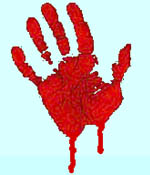 Blood Ritual |
 New America |
| Navigate This Site | |
 | |
| Home | |
| Valentine | |
| Dilling | |
| Talmud | |
| The Rabbis | |
| Supplement | |
| Glossary | |
| Download | |
| Admin | |
Endnotes:
- This and other Come and Hear™ Studies on Talmudic Judaism can be found online:
- http://www.come-and-hear.com/editor
- The Jewish Religion: Its Influence Today by Elizabeth Dilling, complete with all 300 exhibits, can be found online:
- http://www.come-and-hear.com/dilling
- Soncino Babylonian Talmud tractates, with Forewords, Introductions, Glossary, List of Abbreviations, and footnotes. Now you can study the Babylonian Talmud in full context and with the running commentary of the finest scholars of Judaism:
- Tractate Berakoth: http://www.come-and-hear.com/berakoth
- Tractate Shabbath: http://www.come-and-hear.com/shabbath
- Tractate Yebamoth: http://www.come-and-hear.com/yebamoth
- Tractate Kethuboth: http://www.come-and-hear.com/kethuboth
- Tractate Nedarim: http://www.come-and-hear.com/nedarim
- Tractate Nazir: http://www.come-and-hear.com/nazir
- Tractate Sotah: http://www.come-and-hear.com/sotah
- Tractate Gittin: http://www.come-and-hear.com/gittin
- Tractate Baba Kamma: http://www.come-and-hear.com/babakamma
- Tractate Baba Mezi'a: http://www.come-and-hear.com/babamezia
- Tractate Baba Bathra: http://www.come-and-hear.com/bababathra
- Tractate Sanhedrin: http://www.come-and-hear.com/sanhedrin
- Tractate Abodah Zarah: http://www.come-and-hear.com/zarah
- Tractate Horayoth: http://www.come-and-hear.com/horayoth
- Tractate Niddah: http://www.come-and-hear.com/niddah
- Tractate Tohoroth: http://www.come-and-hear.com/tohoroth
- Search the Talmud http://www.come-and-hear.com/tindex.html
- Download all the above resources for local study, CD, or mirror web site:
- http://www.come-and-hear.com/download
Appendix A: ADL Takes Talmud Quotes Out of Context
Finding that text has been taken out of context is always disappointing. In a position paper entitled "The Talmud in Anti-Semitic Polemics," the ADL reports that David Duke took text out of context to produce a classic anti-Semitic attack. Here is the ADL description:
To substantiate their depiction of Jews as conspirators and plotters against their non-Jewish neighbors, anti-Semitic polemicists often cite a passage found in several places in the talmudic and midrashic literature stating that non-Jews who study Torah are deserving of death; in their minds, this statement amounts to a secrecy pact among Jews to prevent news of their nefarious creed from reaching the rest of the world. In his autobiography My Awakening, David Duke dramatizes his encounter with this Talmudic statement when he first read selections from the Talmud:One of the first passages I read really surprised me. It said,Duke apparently did not read on, however, or he would have seen another Talmudic opinion on the matter. The entire passage reads:
"A heathen [Gentile] who pries into the Torah [and other Jewish Scriptures] is condemned to death, for it is written, 'It is our inheritance, not theirs.'"
(Sanhedrin 59a) … (My Awakening, p. 241)
[Hebrew text]
R. Yohanan said, "A non-Jew who studies Torah is worthy of death, as the verse states (Deuteronomy 33:4), 'Moses commanded us the Torah as an inheritance' — implying that it is for us but not for them [non-Jews]" … R. Meir said, "How do we know that a non-Jew who studies Torah is like a High Priest? From the verse which states (Leviticus 18:5), '… that a man shall carry out these laws by which he shall live.' The verse does not refer to Jews but to the generic 'Man' — thereby teaching that even a non-Jew who studies Torah is like a High Priest."
— ADL (36)
The ADL argument seems reasonable, and it quotes text omitted by Mr. Duke. The ADL then explains in two long paragraphs that "neither R. Yohanan nor R. Meir is speaking literally … an essential aspect of Jewish doctrine has been to spread God's light to the non-Jewish nations of the world." But notice the ellipses that appear in the ADL quotation, above? What text did the ADL omit? Let's have a look.
The Soncino translation of Sanhedrin 59a contains important text in the place of ADL's ellipsis, and an additional sentence at the end of the paragraph. The parts omitted by the ADL are in emphasized bold typeface, and the entire paragraph reads as follows:
GEMARA. … R. Johanan said: A heathen who studies the Torah deserves death, for it is written, Moses commanded us a law for an inheritance; it is our inheritance, not theirs. Then why is this not included in the Noachian laws? — On the reading morasha [an inheritance] he steals it; on the reading me'orasah [betrothed], he is guilty as one who violates a betrothed maiden, who is stoned. An objection is raised: R. Meir used to say. Whence do we know that even a heathen who studies the Torah is as a High Priest? From the verse, [Ye shall therefore keep my statutes, and my judgments:] which, if man do, he shall live in them. Priests, Levites, and Israelites are not mentioned, but men: hence thou mayest learn that even a heathen who studies the Torah is as a High Priest! — That refers to their own seven laws.
— Babylonian Talmud Sanhedrin 59a
Soncino 1961 Edition, page 400 (emphasis added)
Thus, we see, the full text reads just as the "anti-Semitic polemicists" allege: In the eyes of the Talmud Sages, a Gentile who studies the Torah deserves death. It is Abraham Foxman's staff at the ADL who have reversed the original meaning of the text. This page of the Soncino Babylonian Talmud was reproduced in photocopy by Elizabeth Dilling in her The Jewish Religion: Its Influence Today as Exhibit 60. (35) Sanhedrin 59a appears in a long discussion that ranges from Sanhedrin 56a through 60a. That is a discussion the seven "Noachian (or Noahide) Laws." Violation of any of these laws results in a death penalty for a Gentile. In the passage in question, R. Johanan is including study of the Torah by Gentiles as a capital offense under the Noahide Laws. A Gentile who studies the Torah is in violation of those laws, either because he is stealing an inheritance or violating a betrothed maiden — take your pick. The death sentence earned by the Gentile is reiterated in Sanhedrin 57a:
GEMARA. … R. Huna, Rab Judah, and all the disciples of Rab maintained: A heathen is executed for the violation of the seven Noachian laws; the Divine Law having revealed this of one [murder], it applies to all.
— Babylonian Talmud Sanhedrin 57a
Soncino 1961 Edition, page 388
A serious student who wants to understand Talmud-based Jewish religious teachings concerning Gentiles and the Torah, and Gentiles in general, should read The Jews Are Called "Man," by a leading Israeli Torah scholar, Rabbi David Bar-Chayim. Rabbi Bar-Chayim's work has been published on the Internet by Daat Emet. The complete Daat Emet presentation is available through the link in the Supplement Section.
In the Introduction, Rabbi Bar-Chayim shows us that the normative interpretation concerning Gentiles and the Torah is as follows:
[A Gentile] is permitted to study those specific seven Noahide commandments — and if he learned more than this, he is punishable by death. So the Tosaphot wrote in Tractate Avodah Zara 3a, s.v. sh'afilu, and Maimonides in The Laws of Kings, chapter 10, halacha 9, writes: "A Gentile who engaged in Torah is punishable by death. He should not engage in anything other than their seven commandments alone."
— Rabbi Bar-Chayim (emphasis in original) (40)
It is beyond the scope of this essay to speculate on the ADL's purpose in the censoring the sacred Talmud, but a good Talmud translation shows they certainly have done so. It does not help to misrepresent your opponent during a debate — it makes the ADL look dishonest, and that doesn't help the ADL cause. Telling partial truths does not further understanding between people of different faiths. We urge the Jewish people to put pressure on the ADL to stop misrepresenting Jewish religious beliefs.
Appendix B: Rodkinson's Undocumented Censorship
The Rodkinson Talmud is currently on line and publicly accessible at Sacred Texts. (33) The webmaster of Sacred Texts, J. B. Hare, guarantees us that the Rodkinson text is complete, apart from omissions of obscure debates. J. B. Hare asserts that Rabbi Rodkinson has documented all such omissions, and it is "hurtful" to suggest otherwise.
Some quote material out of context, or ascribe hostile intent to innocent passages. The most hurtful critics are those who claim that Rodkinson deliberately left out material to conceal an evil Jewish agenda. After completion of this etext, I can unequivocably [sic] state that this is hogwash. Rodkinson's Talmud is, by definition, an abridgement for modern readers. He left out only the sections where the debate spins off into complete obscurity, and was careful to document where he did so. Now that this incredible text, lovingly translated, is on the Internet perhaps these criticisms can finally be put to rest.
— J.B. Hare (41)
J. B. Hare states that Rodkinson omitted text only where "the debate spins off into complete obscurity." But Rabbi Rodkinson himself gives his reasons for omitting text in his book, The History of the Talmud (cited above). He suggests that rabbis who were secretly Christians inserted text into the Talmud "to carry on propaganda for their ideas." Rabbi Rodkinson uses the word "offensive" to describe the passages he omits, and he says there are "very many" of them.
In a footnote in New Edition of the Babylonian Talmud Rabbi Rodkinson tells his readers that he has omitted two pages of material from Tractate Sanhedrin, Chapter VII. Rabbi Rodkinson states that the omitted text pertains to "miserable crimes with men and animals" (cited above).
J. B. Hare ignored Rabbi Rodkinson's own statements describing the material omitted and the reasons for omitting it. J. B. Hare also asserts that Rabbi Rodkinson "was careful to document where he" omitted text. A cursory examination reveals two undocumented omissions, and it is reasonable to assume there are others. Remember, in Rabbi Rodkinson's own words, there were "very many" offensive passages.
Rodkinson's Undocumented Censorship, Example 1
One passage we found in Shabbath 118b is of little consequence. Here is the Rodkinson text from Sacred Texts. Between these two paragraphs, text is deleted, but Rabbi Rodkinson does not indicate any omission:
Said R. Jose: "I have gone in unto my wife five times and have planted five cedars in Israel." Who are they? R. Ishmael, R. Eliezer, R. 'Halafta, R. Aftiles, and R. Mena'hem, all sons of R. Jose. But he also had a son called Vradimos? Nay; Vradimos is the same as R. Mena'hem, and the reason he was called Vradimos was because his face was as beautiful as a rose (Vrad is Aramaic for rose).
Said R. Jose again: "In all my days the ceiling of my house never saw the seam of my undershirt." Again said be: "I never acted contrary to the advice of my colleagues. I know well that I am not a descendant of priests, but when my colleagues asked me to pronounce a benediction usually said by priests, I did so." Again he said: "I never said a thing that I afterwards repented having said."
— New Edition of the Babylonian Talmud, Tractate Shabboth, Chapter XVI (27)
Here is the text that should appear between the two paragraphs, above. This text is shown as it appears in the Soncino Talmud:
GEMARA. … Shall we say that R. Jose did not fulfil his marital duties? — Rather say, I cohabited five times and repeated.
R. Jose said: I have never called my wife 'my wife' or my ox 'my ox', but my wife [I called] 'my home,' and my ox 'my field'.
R. Jose said: I have never looked at my circumcised membrum. But that is not so, for Rabbi was asked, Why were you called 'Our holy Teacher?' Said he to them, I have never looked at my membrum? — In Rabbi's case there was another thing to his credit, viz., he did not insert his hand beneath his girdle.
— Babylonian Talmud, Tractate Shabbath 118b
Soncino 1961 Edition, pages 583-584
This text has been marked with underlining in the Come and Hear™ hypertext Talmud, available through the above link.
Rodkinson's Undocumented Censorship, Example 2
This text, omitted from Sanhedrin 106a, is more serious because it has been the subject of some controversy. To some Talmud scholars, the words "she who was the descendant of princes and governors, played the harlot with carpenters" refers to Mary, mother of Jesus. The interpretation reinforces the theory that "Balaam" (Rodkinson's "Bil'am") is a code name for Jesus (as, for example, Elizabeth Dilling wrote [32]). Sanhedrin 106a is discussed in detail in Jesus' Membrum in the Talmud. The text deleted by Rabbi Rodkinson is shown with underlining in Sanhedrin 106a of the Come and Hear™ hypertext Talmud. Rabbi Rodkinson included only the least controversial segments of Sanhedrin 106a. His omission occurs after the second paragraph in this excerpt:
It reads [Num. xxxi. 8]: "And the kings of Midian they [p. 344] slew, besides the rest of their men that were slain … and Bil'am, the son of Beor, they slew with the sword." What hath Bil'am to do there? Said R. Johanan: He went to take the reward for the twenty-four thousand Israelites who were killed through his advice. Said Mar Zutra b. Tubia in the name of Rabh: This is what people say: A camel wanted to get horns, and therefore the ears he possessed were cut off.
[Josh. xiii. 22]: "And Bil'am, the son of Beor, the soothsayer." The soothsayer! Was he not a prophet? Said R. Johanan: At the beginning he was a prophet, but thereafter became a soothsayer.
A Sadducaer said to R. Hanina: Are you aware of Bil'am's age when he was slain? And he answered: There is nothing written about it, but from [Ps. iv. 24]: "Let not the men of blood and deceit live out half their days," I understand that he must have been thirty-two or thirty-three when he was killed. And the Sadducaer answered: Thou sayest well, as I saw the record of Bil'am, and it was written therein thirty-three years was Bil'am when he was killed by Pinehas, the murderer.
— New Edition of the Babylonian Talmud, Tractate Sanhedrin, Chapter XI (26)
Here is the text Rabbi Rodkinson omitted as it appears in the Soncino Sanhedrin 106a:
GEMARA. … R. Papa observed: This is what men say, 'She who was the descendant of princes and governors, played the harlot with carpenters. Did the children of Israel slay with the sword among them that were slain by them. Rab said: They subjected him to four deaths, stoning, burning, decapitation and strangulation.
— Babylonian Talmud, Tractate Sanhedrin 106a
Soncino 1961 Edition, page 725
Interested readers are encouraged to explore the Rodkinson Talmud (as presented at Sacred Texts) and compare it with the Soncino translation at Come and Hear™. A possible starting point is use of "membrum" (penis), instances of which can be found with the Come and Hear™ Search Engine.
Rodkinson Uses Word Substitution
Let's take another look at the Rodkinson text cited above:
A Sadducaer said to R. Hanina: Are you aware of Bil'am's age when he was slain? And he answered: There is nothing written about it, but from [Ps. iv. 24]: "Let not the men of blood and deceit live out half their days," I understand that he must have been thirty-two or thirty-three when he was killed. And the Sadducaer answered: Thou sayest well, as I saw the record of Bil'am, and it was written therein thirty-three years was Bil'am when he was killed by Pinehas, the murderer.
— Rabbi Rodkinson (42)
This is translated in the Soncino text as follows:
GEMARA. … A certain min said to R. Hanina: Hast thou heard how old Balaam was? — He replied: It is not actually stated, but since it is written, Bloody and deceitful men shall not live out half their days, [it follows that] he was thirty-three or thirty-four years old. He rejoined: Thou hast said correctly; I personally have seen Balaam's Chronicle, in which it is stated, 'Balaam the lame was thirty years old when Phinehas the Robber killed him.'
— Babylonian Talmud, Tractate Sanhedrin 106b
Soncino 1961 Edition, page 725
The word min in the Soncino Glossary translates to "a heretic, esp. a member of the sect of the early Jewish Christians." Sanhedrin 90b, page 604, footnote 12 (seen here as footnote 17) defines min as a "term used generally as a designation for Judeo-Christians." In place of min, however, Rabbi Rodkinson uses the word "Sadducaer." The two meanings are not the same, nor could they ever be the same.
The complete text contains, first, a reference to a woman who is a "descendant of princes and governors [who] played the harlot with carpenters," some remarks from a Judeo-Christian, and then a discussion of someone who was killed in his early thirties. For the casual reader, the suspicion mounts that these may in fact be references to Jesus.
By dropping the sentence about the "harlot" and changing the definition of min (Christian), the suggestion of Jesus and the attendant controversy evaporate. Whether the passage originally referred to Jesus is not the point. Omission and modification of the text constitutes censorship.
Conclusion
Despite the testimony of J. B. Hare of Sacred Texts, the Rodkinson's New Edition of the Babylonian Talmud is not a reliable translation of the Talmud. Censorship of an important religious document is bad enough. But when this is coupled with an attestation that the text is complete, such as J. B. Hare's, a sincere student of religion is done a serious disservice.
